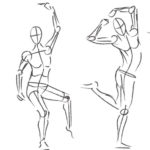Stimulate thought and conversation between students who struggle to express themselves verbally.
Example:
Contrary to dominant pedagogical practices, many students are not comfortable speaking up in the classroom. Whether because of anxiety or depression, learning academic English as a new language, a history of being and feeling marginalized in the classroom, or some combination thereof, many students need non-conversational forms of contributing to classroom knowledge creation.
I always invite my students to write down their thoughts—in whatever language they feel most comfortable, including visual arts—during traditional class discussions. If they don’t feel up to sharing verbally, I let them know that I, too, often go non-verbal; I let them know that it is a tremendously important skill set to take notes during conversations and develop your own thoughts in non-verbal way during a verbal conversation. Often—after I’ve told them their writing might be shared on a small scale—I invite my quieter students to share these notes with me after class; other times, I’ll invite them to share them with each other. This allows all students to normalize modes of being comfortable in the classroom, even when it feels impossible to use our physical voice.
Further Reading:
Multimodality in Motion: Disability & Kairotic Spaces Webtext.
Created by Jenn Polish
Reviewed by Louis Olander
Categorised in: (4) Physical Action, (5) Expression and Fluency, (7) Recruiting Interest, (8) Effort and Persistence, ACTION AND EXPRESSION, ENGAGEMENT
